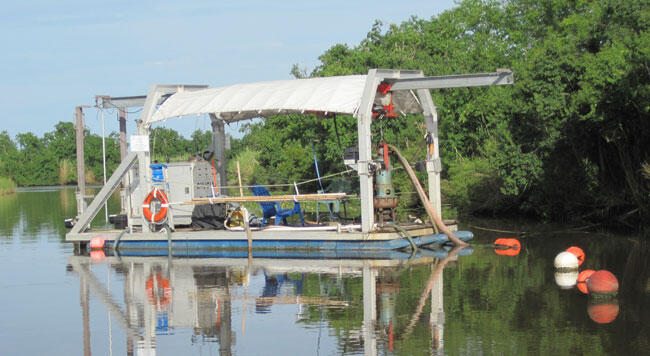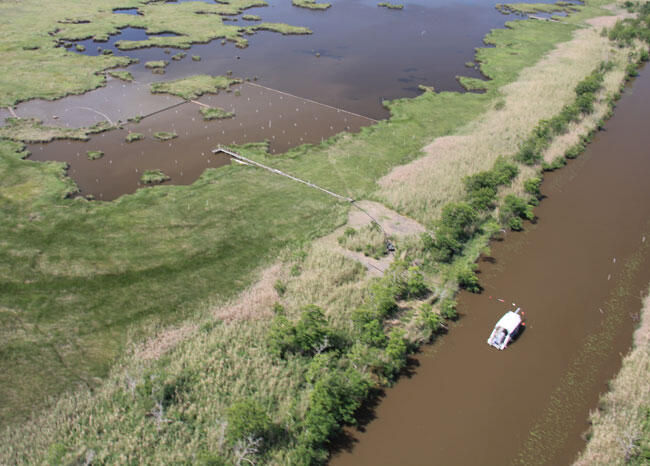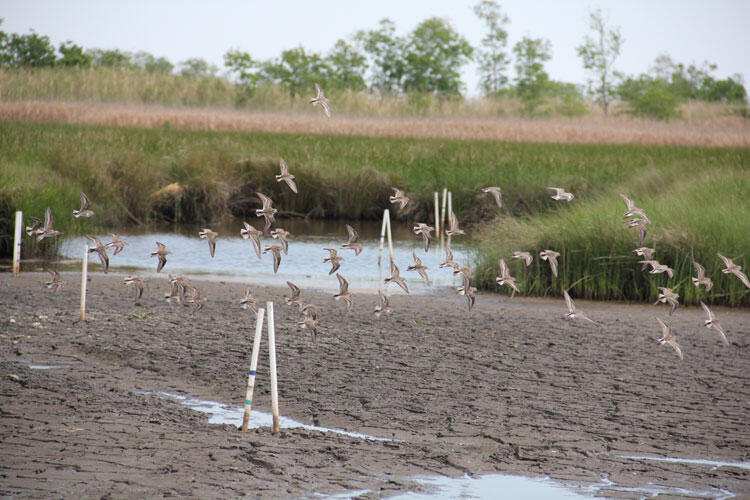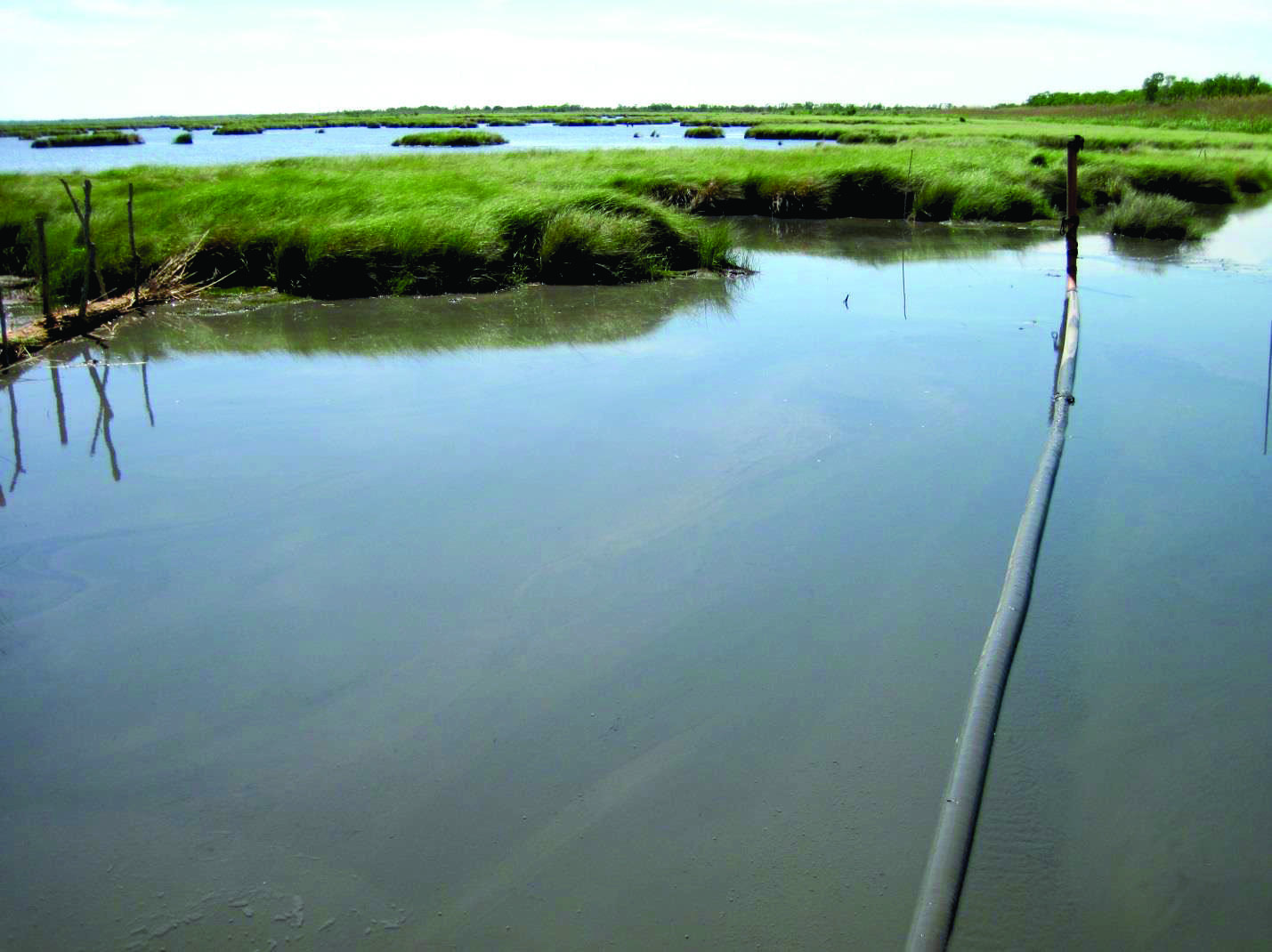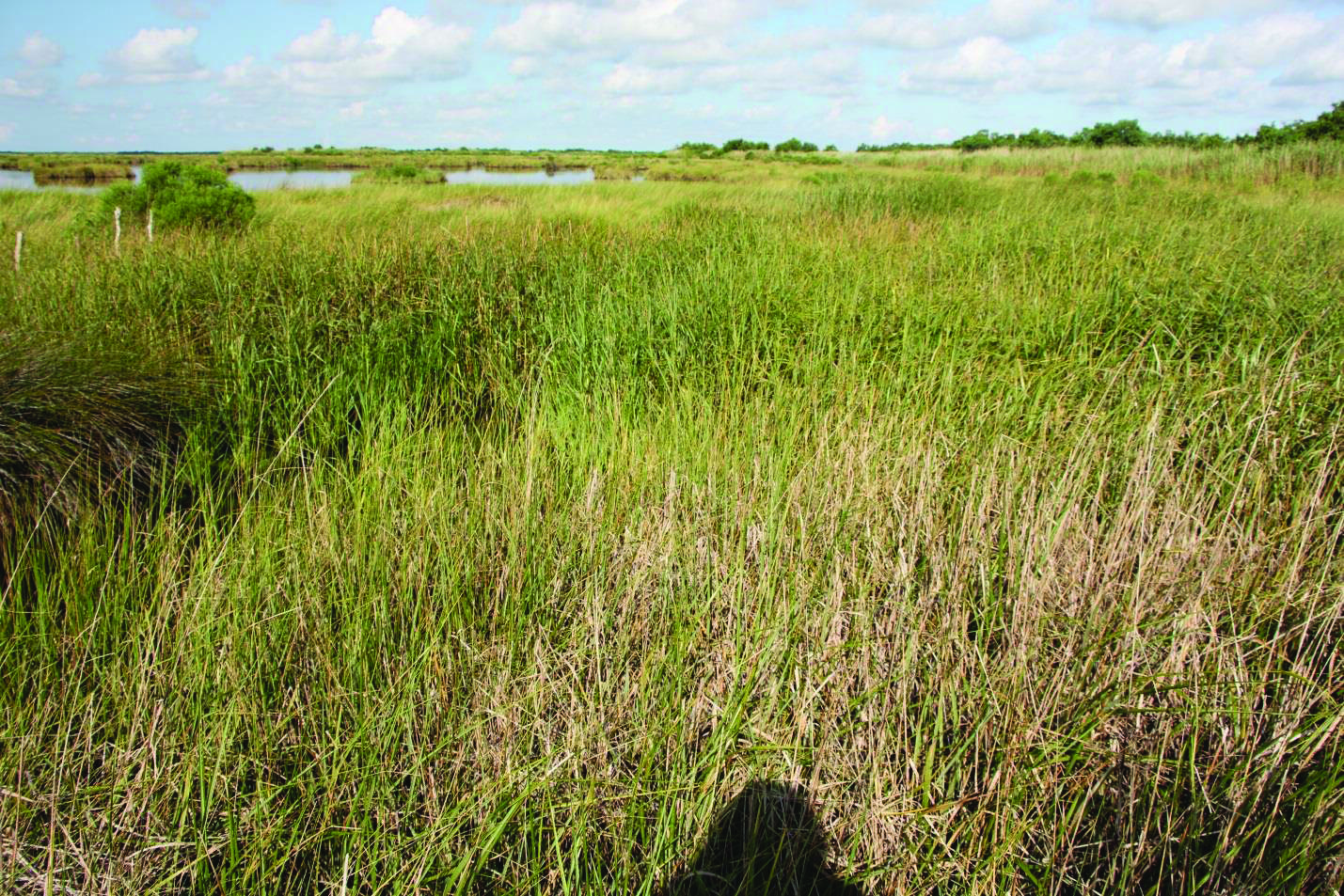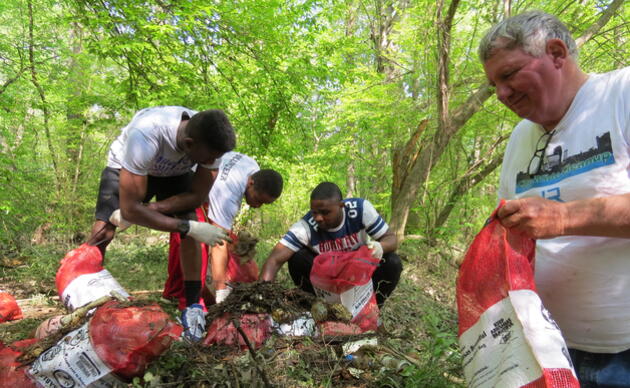Audubon Louisiana's Small Dredge
In 2008, Hurricane Ike swept through Southwest Louisiana and the Paul J. Rainey Wildlife Sanctuary, Audubon’s oldest and largest sanctuary. Within the Rainey Sanctuary, the hurricane gouged 16 acres of marsh, creating an open pond. Faced with the need to restore the marsh in the hurricane-created pond, Audubon commissioned construction of a small dredge as a cost-effective means to put coastal restoration into the hands of local people with local concerns.
The concept was to develop a user-friendly dredge that was small enough to be portable, but powerful enough to efficiently move sediment for small-scale marsh restoration work in areas of limited accessibility. The dredge also needed to be cost-effective, so landowners could begin to restore land without having to wait for state or federal projects. State and federal dollars target large projects that encompass thousands of acres, while small-scale restoration can be difficult to fund or overlooked.
Audubon Louisiana partnered with local construction company Javeler Construction, Inc. to design and construct the small dredge, and the “John James” dredge was born. Javeler Construction, Inc. donated the dredge to Audubon Louisiana for proof of concept and the operation of the project was initially funded by a TogetherGreen grant.
The John James is an open pontoon barge, 9ft wide 24ft long and 12 feet high, drawing about 18 inches of water. A diesel fueled, hydraulic, 15 hp Toyo pump is the powerhouse and can move mud more than 600 feet away through a 4” hose. It takes only two people to operate and manage all aspects of the dredge and fill process. Analysis has shown that the cost per acre is much lower than traditional marsh creation andrestoration operations.
Using the small dredge, Audubon Louisiana created marsh terraces within the pond to reduce wave action and erosion. This promotes the growth of marsh and aquatic vegetation, creating additional habitat for birds and other wildlife.
Learning the art of mud management has been an ongoing process. Before and after each terrace is put in place, and then periodically for at least three years, the pond area will be surveyed. Vegetative growth will be measured as well as the plant species that occur. Seven terraces are planned, but the actual number of terraces to be completed is highly dependent upon weather, water levels at the time of dredging, and staff schedules.
If you would like to learn more about small dredges and how they work to restore land, we've put together a dredge guide here: Utilizing Small Dredge Technology for Restoration of Marsh on Private Properties
Get Involved
Be a voice for birds
Join our Advocacy Team to receive action alerts about legislation and policy when Audubon Delta's birds need your voice.
Join Our Flock
Signing up is the best way to keep up with Audubon's latest news, programs and initiatives.

